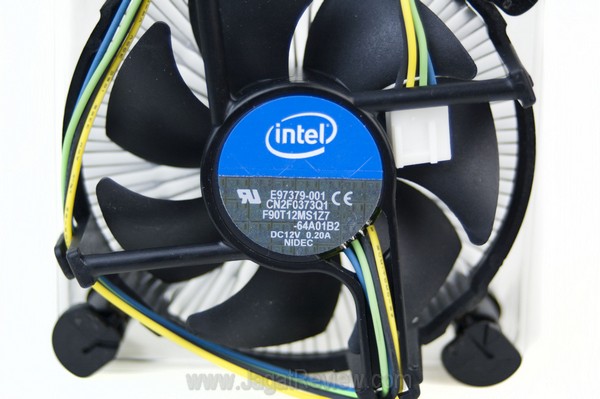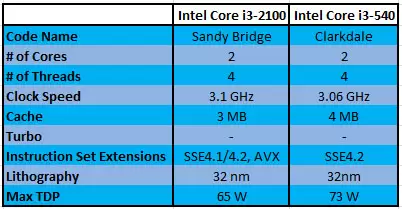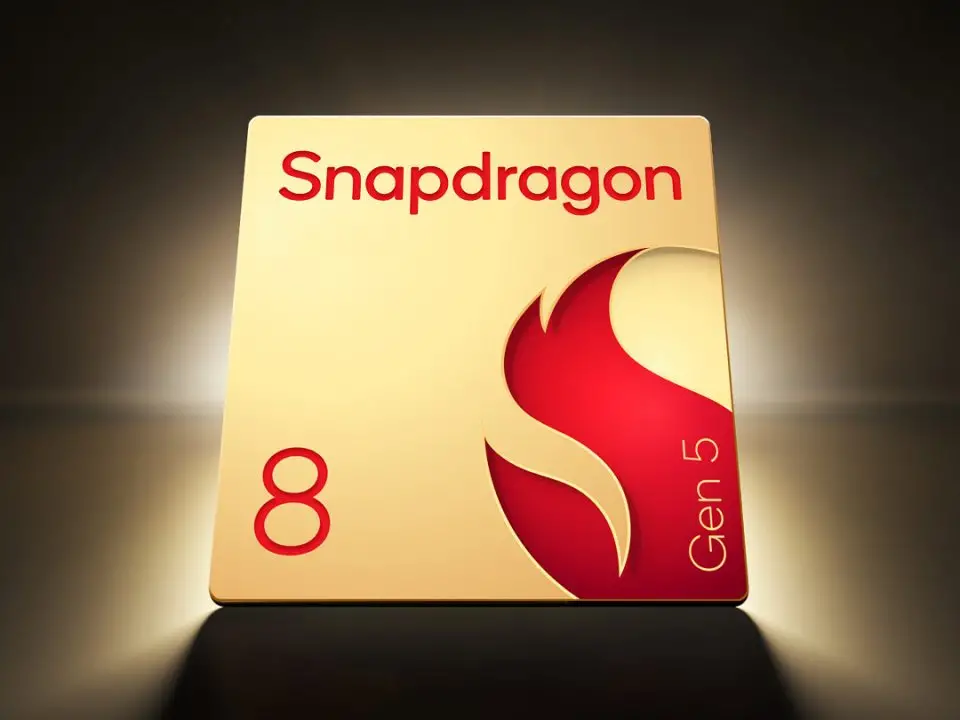Review-Intel Core i3 2100 Processor: A Sandy Bridge for All
Upon opening the box, we came across these two items:

Core i3 2100’s sales package consists of a heat sink fan (HSF) and, of course, the processor itself.

The standard-issue Intel HSF has rounded aluminum fins around a copper base. A DC 12V (0.20 Ampere) fan sits on top. The same HSF is also issued to other Intel CPUs.

The CPU rests encased in a protective plastic package. Our processor happens to be an engineering sample. The “QA25” code engraved on the heatpreader shows that the processor is a Core i3 2100 with a clockspeed of 3.1 GHz.

Moments later, the processor was already installed on a socket 1155 motherboard. All Sandy Bridge processors use LGA 1155 packaging, which is slightly different from the previous LGA 1156.
We will put the Core i3 2100 against a Core i3 540 based on the older Clarkdale architecture. Both processors currently occupy the same price point (around US$ 120), and therefore, it would be interesting to compare these two.
Let’s take a look at the table below to learn about the differences between a Core i3 540 and a Core i3 2100.

It seems that these CPUs are almost identical to one another. Both have 2 physical cores and four logical threads, and even operate at the same clock speeds. The Core i3 540 has a larger cache, but the Core i3 2100 has the advantage of having the new AVX instruction set and lower TDP.
























